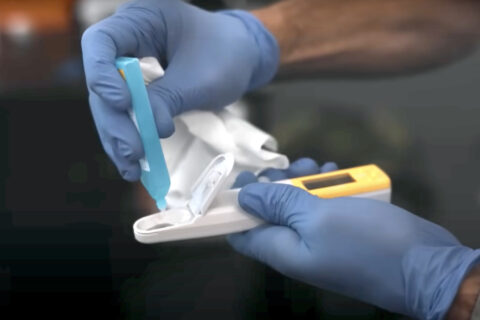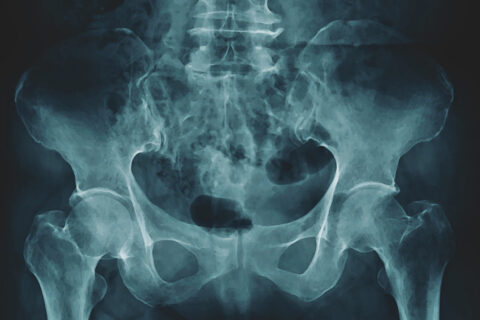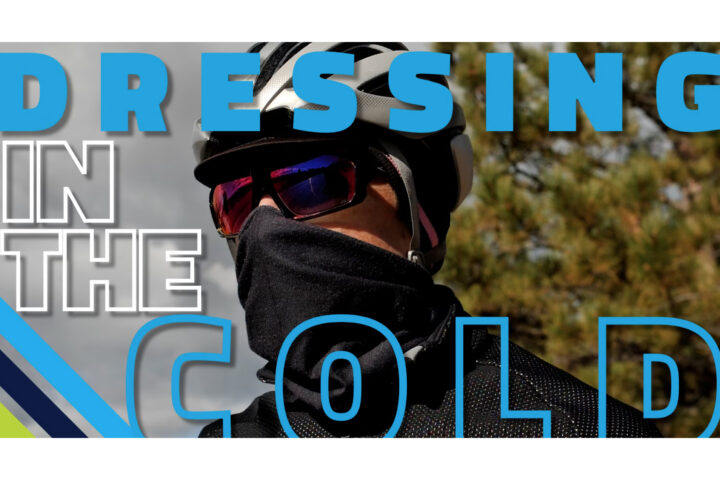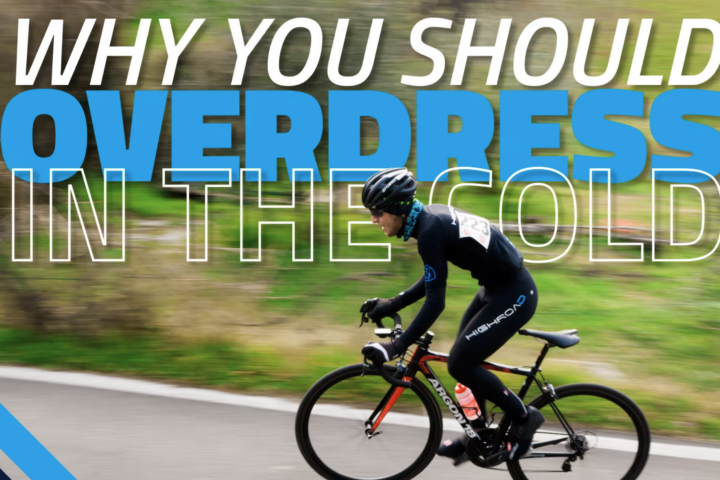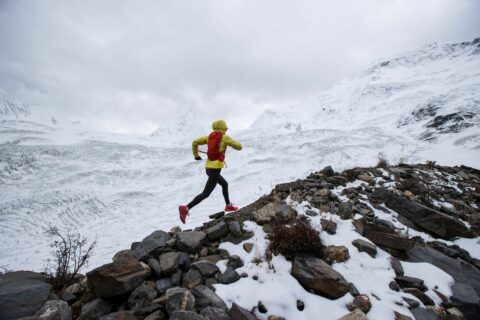Cold temperatures can have a big impact on our physiology. We detail the performance effects of cold temps, and learn how to combat them.
Video Transcript
Dr. Stephen Cheung 00:01
This is Dr. Stephen Cheung, Professor of Kinesiology at Brock University, and author of the Book Cycling Science, along with Advanced Environmental Exercise Physiology. What we’ll be doing in this series at Fast Talk Laboratories is discussing all the myriad ways that cold affects our body, whether it impacts our ability to exercise, and also what can we do about it? In this first episode of the series we’re going to talk about simply, why is it that I can’t seem to go as fast when it is cold? Those of you who are fans of cyclocross like I am, will know that cold and ‘cross seem to go hand in glove with each other. And in recent years, this was probably exemplified in Namur in December 2019, where it was raining the entire week of the race. And then during the race day itself, it wasn’t just raining, it was downright cold and nasty conditions. So the racers here were facing extreme conditions, not just of the cold environment, but also of the extreme rain that was coming down, and some fared better than others.
How Weather Can Affect People Differently
Dr. Stephen Cheung 01:19
Probably an example of someone who fared very, very badly in this condition was the under 23, World Cup leader, Eli Iserbyt, who was one of the top racers. He was a smaller ride and he was so cold that about two or three laps in, he actually stopped in the pits to put on an extra thermal jacket. And even that wasn’t enough to save him. And this is a picture of Eli in the middle there in the white World Cup leader skinsuit of the under 23’s. He got to be so cold that he was uncontrollably shaking, after about five laps or so to the point that he just couldn’t continue further, and he actually quit the race. So this shows that this was a case of actual drop in body temperature really impacting his ability not just to pedal the bike, but also the pedal to bike safely on such a technical course. Another example of a race where cooler or cold temperatures probably negatively impacted performance was the London Marathon in October 2020. Because of the COVID pandemic, the race was changed to an almost pan flat circuit. And especially with the new shoe technologies that were emerging, prognosticators are really anticipating the potential for a world record on either the men’s or the women’s races. We saw that none of this actually happened in both the men’s and the women’s events. The winning times was quite a bit off of the world record and also their personal best. Race day itself was about seven degrees and it was also damp and drizzly. So that probably negatively impacted the race. There are other factors at play here, one of which is race dynamics. For example, Brigid Kosgei won the race by over three minutes. So she never really had to push that hard to where she had to go in Chicago in 2019, where she set a world record. Whereas Kitata won in a sprint. So he was probably a lot closer to his true physiological maximum, but it was still almost a minute off of his personal best. The other thing to note was that the runners, as you can see here are all quite lean, minimal body fat. The other thing that they weren’t really prepared for was warming up in these conditions. And they spent a lot of their staging time in outdoor environment and in the damp and cool weather. So they were probably a little bit cold and stiff at the start to which really didn’t help their pacing strategy.
Your Body Does Not Get Enough Oxygen In The Cold
Dr. Stephen Cheung 04:19
So let’s look at some of the science behind why we cannot exercise as hard. The first two studies really think back to the example of Eli Iserbyt in Namur, where he was just so cold, his body temperature had actually dropped and he could not ride as hard eventually dropping out. In this first study, we had a 15 Kilometer time trial, where one time they did it in 23 degrees Celsius, so your normal control room temperature, and then they did it twice in the cold where it was zero degrees Celsius, and in addition, they were mildly hypothermic to start the time trial because we cooled them down by half a degree core temperature. We also had one of those trials where they breathed higher than normal oxygen in the air. So that’s a condition of cold plus hyperoxia. And the reason for that was we want to look at what happened with the impact of oxygen, what role does that play in performance? What we have in this graph is every two and a half kilometer intervals of that 15 Kilometer time trial laid out on the horizontal axis. On the vertical axis, we had how much time it took to complete that two and a half K interval. Not surprisingly, when you were exercising in the code, and also hypothermic, you simply weren’t able to go as hard. And it took you longer, with lower mean power output to complete each two and a half kilometer interval. The interesting thing was when we switched on the hyperoxia, your performance essentially went back to normal baseline when you were in a more comfortable environment where you weren’t pre cooled. So what this suggests to us was that the impact of the cold was not necessarily just stiff muscles, but really the lack of oxygen supply to those muscles. So to summarize this study, when you’re a cold, you have less oxygen delivery, because your muscles are vasoconstricted, the blood vessels aren’t open as much, and ultimately, there is less oxygen available to the muscles, and you simply cannot work as hard.
What Does Shivering Do For Your Body?
Dr. Stephen Cheung 06:51
Now, the other thing that would have happened to Eli during that race was that he was so cold, his body’s response was to start generating heat by shivering. Shivering is going to cost extra energy, you don’t get that extra heat generation for free, you’re contracting your muscles, and that is taking up additional oxygen. So in this study, that I was also a part of, what we wanted to look at was just how much does shivering impact your oxygen cost for exercise. So in this study, we also pre-cooled individuals by half a degree core temperature, so that they were in a moderate state of shivering, we then had them walk or jog at two different speeds. But what we had was a treadmill that we controlled so that regardless of whether they were shivering, or whether they were in a neutral condition, body temperature, before the start we maintained the similar oxygen uptake. So their overall pace in terms of oxygen uptake was the same, but we altered the treadmill speed to adjust that. And what we have in the two red circles are the results for the moderate intensity on the top and the low intensity on the bottom. With shivering, the treadmill speed was significantly slower, either 15 minutes in or in the case of the low intensity effort, even up to 30 minutes into the walk. And the reason a treadmill speed was slower is because you were also at the same time requiring oxygen for your muscles to move and your muscles were also demanding oxygen to shiver and generate the heat to overcome your low body temperature. So what this really suggest is that if your body temperature is lower than desired, lower than optimal, your muscles are going to respond by generating heat through shivering and that is extra oxygen that is being taken away from your ability to actually push the pedals.
What Is The Importance Of Core Temperature?
Dr. Stephen Cheung 09:24
So hopefully the first two studies drive home the key message that you don’t want to be colder than normal when you are out training, or when you’re competing because you simply cannot generate as much power. What happens though, if you’re the example of the London marathon runners, where you may be generating a lot of heat your core temperature might actually be high but your skin temperature is lower than normal because of the damp conditions and the cold weather in this study-again from my lab, I apologize for that, it just worked out that all of these studies are from my lab,- we had individuals passively heated from 37.5 degree core temperature, so roughly around baseline, up by two degrees to 39.5 degrees Celsius. And then we had them perform a knee extension. So you may have done this in a gym with a knee extension machine. And we had them do it at three different speeds. And we tested them when they got up to 39.5 degrees,and also when they got to that threshold temperature, we cooled their skin down by quite a bit. And we want to see what happens is it the core temperature that drives their maximal force production, or what impact does suddenly cold temperature have on it? The interesting thing that we found was that the core temperature didn’t really seem to drive your ability to maximally contract your muscles in this knee extension, the torque or the force that you can produce. What seemed to be the main determinant was actually your skin temperature. So even when you had a really hot core temperature of 39.5 degrees, as soon as we cooled your skin down, your core temperature was still high, but even right away with cold skin, you weren’t able to generate as much force. So this really suggests that in terms of a dynamic movement, such as with pedaling a bike, it is our skin temperature that can really drive our instantaneous force production. So you don’t necessarily want really cold skin, you want to cooler skin in terms of maintaining heat flow out from your body, but you don’t necessarily want to have it ice cold in terms of your skin temperature.
What Happens When Our Muscles Are Cold?
Dr. Stephen Cheung 11:59
So far, we’ve talked about what happens when our body temperature is low. We’ve also talked about what happens when our skin temperature is too low. Now let’s look at what happens when our muscles are cooled. In this study, we had participants perform the same force contraction in terms of the same amount of force same force profile under two conditions, one when their forearm was at normal body temperature, and in the other one, when we cooled down their forearm muscle for 20 minutes first. On the top graph is what happens with cold muscles, on the bottom graph is what happens with normal muscles. Each of those colored bands represent one motor unit and a motor unit is the one single nerve to the muscle and all of the individual muscle fibers that it innervates. And the main thing to get out of this graph is that when we are, in this case, neutral muscle temperature we only require 14 of these motor units to perform this task. However, if you look at the graph on top to do the exact same work in the cold, we require 17 motor units, we also require them to be active for much longer. So taken all together when our muscles are cold, we need more actual recruitment of muscle fibers. And we need them to be firing for longer because each of them cannot contract with as much force so we need more and we need them to fire for longer. Overall, what this suggest is when our muscles are cold, we simply have to do more work to generate the same force.
How Can You Prepare For Cold Conditions?
Dr. Stephen Cheung 14:07
So then what should we be doing if we know we’re going to be either training in cold conditions or racing in the cold weather? The main thing that we need to do is ensure that we do a good solid warm up. We do not want to go to the start line with our muscles stiff and also cold because we have seen that they cannot generate as much force and we also need to be using more muscles when that happens. The importance of a warm up is to keep the core temperature warm. Also our muscles warm and also our skin warm. The more intense the race, the more of a warm up that we’re going to need and the more we want to drive our body temperature up and our muscle temperature up before hand in order to be able to perform at their best. So apart from warming up well, we also need to be dressed appropriately for the conditions. So in this case, we should really be listening to Trevor. In multiple times over different Fast Talk podcasts, he has harped on and on about the importance of dressing appropriately for the conditions and how it is better to be overdressed than underdressed. One of the things that Trevor points out is that when you are underdressed and your skin or your joints are cold, you are creating more micro damage to your muscles. So that is obviously a negative thing. But as this talk has demonstrated, when your skin or your muscles are cold, you’re not working as optimally as you can, you’re requiring more energy more muscles to perform the same amount of work. So that is a negative aspect. So one of the things is especially because it’s your legs that are really driving the bike, you want to keep your legs warm, you want to pack extra clothing, as I am doing here while I’m climbing the Stelvio in Italy. I am having in my back pocket a thick jacket for the descent. I also have an extra pair of long-fingered thick gloves, also for the descent to keep myself warm. And it’s really important to do that and be prepared for the conditions to perform at your best.
Dr. Stephen Cheung 16:39
So here are the references for the studies that we’ve talked about in this talk so far. If you want more information, you can also check out the Fast Talk Podcast episode 111, where Trevor, Chris, and I go into all sorts of myth-busting about riding in the cold and also in the heat. Thanks for being part of the Fast Talk Labs family. Coming up we’ll have a lot more information on how different environments whether it’s cold, heat altitude, or pollution affects our physiology and our performance. See you next time.

